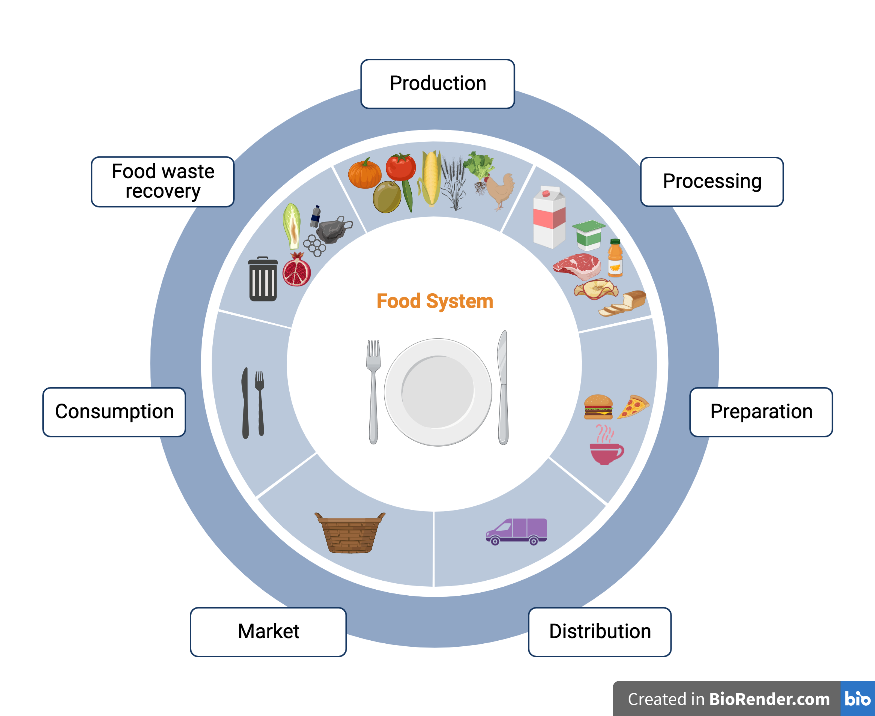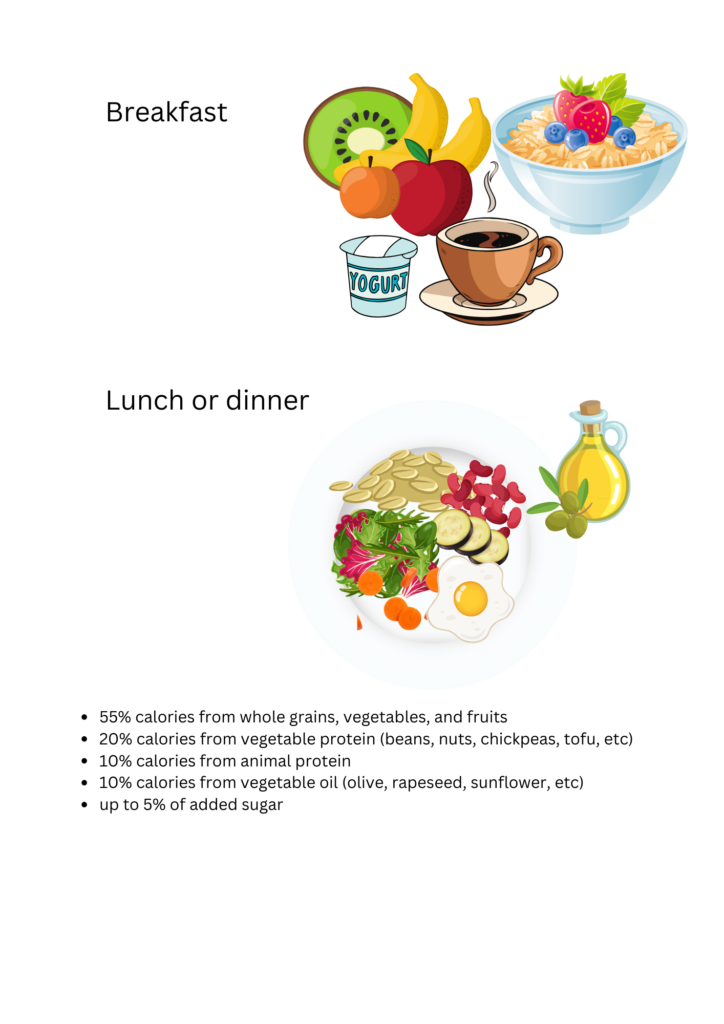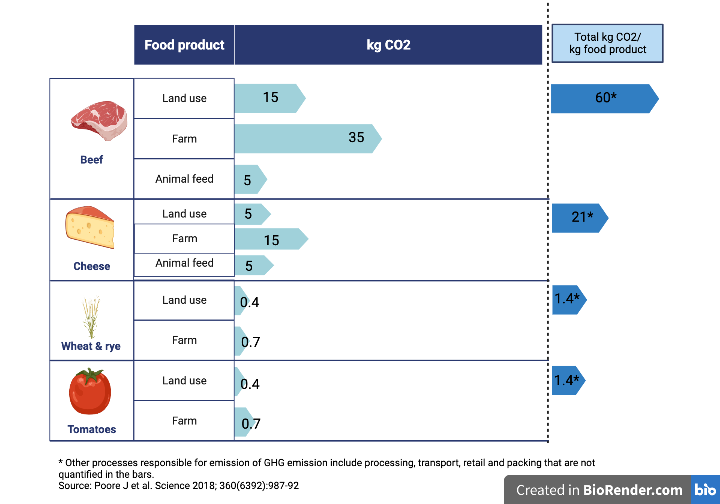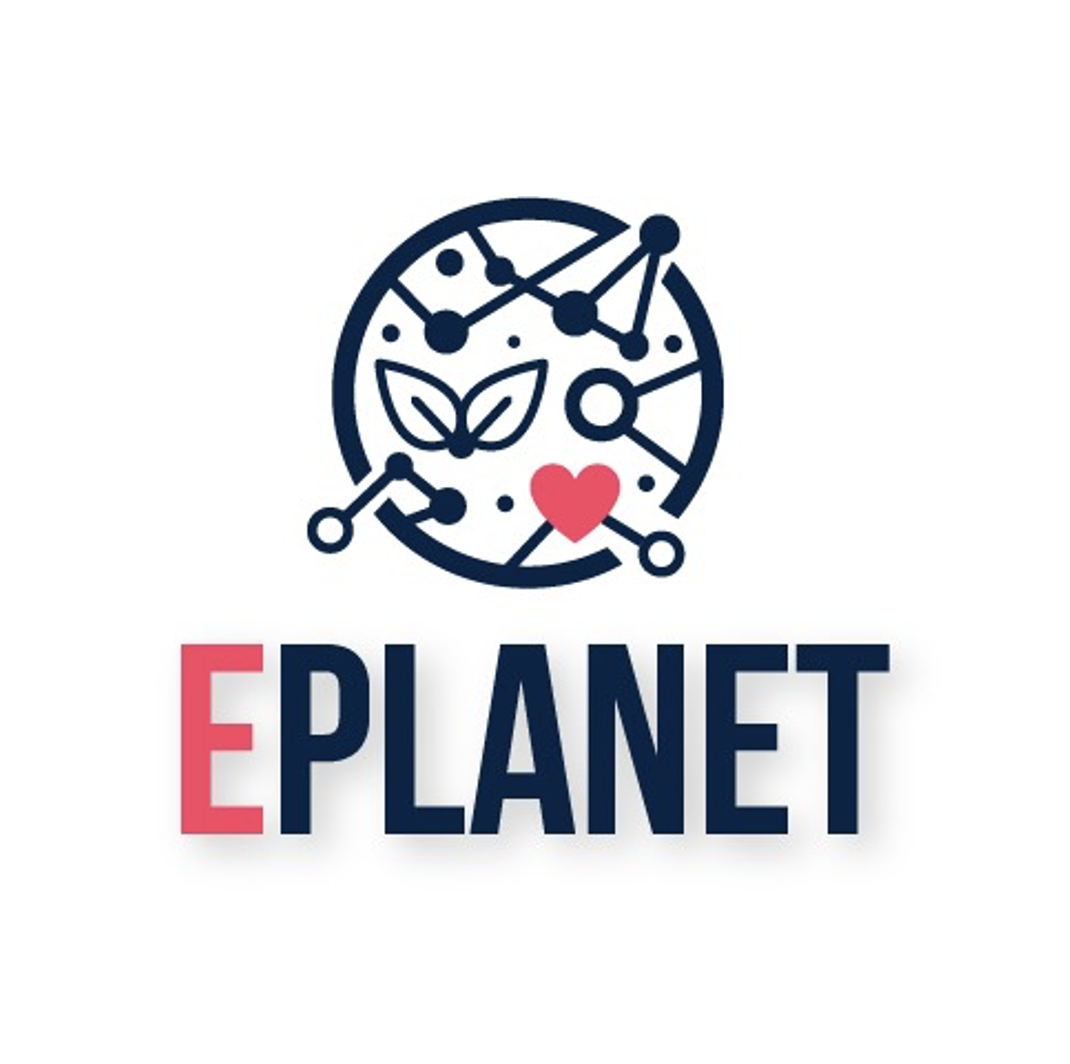What is ultra-processed food (UPF)?
UPF are foods that undergo sophisticated industrial processing that requires heavy machinery. Only the food industry has the ability to produce UPF. The main concern of UPF is the addition of sugar, fat, salt and food additives to increase the shelf-life and to change food taste, consistency and flavor. Nowadays there are several options of UPF using non-caloric sweeteners (with the nutritional claim as “diet” and “light”) and plant-based products (such as plant-based drinks – oat milk, almond milk etc, vegan industrialized yogurts, industrialized soy hamburgers) that have been attracting an increasing group of consumers with special needs. Classic examples of UPF include packaged snacks, sugary drinks, packaged backery products, package sweets and frozen ready to-eat-meals including vegetarian/vegan alternatives.

How should the food be distributed in a meal?

What is a food desert?
A food desert is an area that has limited access to food retailers providing fresh products and healthy groceries at affordable prices. An area with food desert has grocery stores where ultra-processed food replaces fresh foods in the shelfs. An important characteristic of a food desert is the lack of option to buy healthy food in a 20 min distance (using a motorized transport) from a geographical point.
How is UPF related to the environment?
UPF is a burden to the overall health. UPF contains food additives that are harmful for the health, and has added fat, and sugars, and the kind of fat that is not good for health. Studies show that UPF is addictive and can easily trigger a compulsory eating pattern. The consequence is an increase in obesity and related non-communicable diseases with a direct negative effect gut microbiota health.
In addition, UPF is also a burden to the environment. It is known that UPF is responsible for 30% of the total food-related GHG emissions, 35% of water use, 39% energy use, 33% of carbon dioxide equivalent emissions and 35% of land use.
Source: H. HAF. Planetary healthy. Safeguarding human health and environment in the anthropocene. Cambridge University Press: Cambridge University Press; 2021
What are healthy and sustainable diets?
Healthy and sustainable diets use fresh and culinary ingredients, with low environmental impact, affordable and culturally adaptable. (3) An example is a plant-based diet. This is a diet where 70% of the protein are from vegetable source. It means that legumes (such as beans, lentils, peas, chickpeas, soybeans), vegetables, seeds and tofu will be used to replace most of the animal protein (beef, pork, poultry, fish, sea food, egg and dairy). In a plant-based diet animal source of protein can be present, but in lower proportion than that of vegetable protein. Examples are the Mediterranean diet, DASH diet (dietary approach to stop hypertension), Okinawan diet and other local diets with predominantly vegetable protein.
Other elements of healthy and sustainable diets are minimum amount ultra-processed food and preferably local foods that do not require transoceanic transportation. It has been shown that food transporting accounts to 19% of the total food-system GHG emission. So, whenever possible, prefer locally produced and seasonal food products.
Sources: EAT-Lancet_Commission_Summary_Report.pdf (eatforum.org) , Global food-miles account for nearly 20% of total food-systems emissions | Nature Food
Why is red meat bad for the environment?
For several reasons:
- 70% of the soy produced in the world is used to feed livestock. These grains could be used to feed people instead.
- It is estimated that the number of calories needed to feed animal will increase by 56% from 2010 to 2050. The more livestock less will be the food available to feed the world population.
- Red meet has the highest GHG emission among the food items. It includes the GHG emission form land use for livestock growth (deforestation, changes in soil carbon), farming (methane emission from cows and manure), animal feed (crop production and its processing into feed for livestock) (Figure 4).
- Red meat has also the largest water footprint among various food items (18000 litres/kg of beef produced as compared to less than 2000 litres/kg for vegetables, grains, legumes, and fruits production).

Sources:
EAT-Lancet_Commission_Summary_Report.pdf (eatforum.org) , Food in the Anthropocene: the EAT-Lancet Commission on healthy diets from sustainable food systems – PubMed (nih.gov)
Use win-win diets instead of lose-lose diets
It is estimated that shifting from the current Western dietary pattern to a plant-based diet will cause a decrease in 70% the GHG emissions and land use and 50% decrease in water use.
| Win-Win Diets | Win-Lose Diets | Lose-Win Diets | Lose-Lose Diets |
| Healthy and sustainable | Healthy and unsustainable | Unhealthy and sustainable | Unhealthy and unsustainable |
| Plant-based diets with fewer animal sourced foods and increased serving of fruits, vegetables, legumes, nuts, and whole grains. | Healthy diets, but not aligned with the goals of sustainable food production. | Food production is sustainable but does not meet energy and nutrients needs. | High in calories, added sugars, saturated fats, processed foods and red meats. |
What is the definition of food system?
The food system goes way beyond food production. It includes all the elements and activities related to production, processing, distribution, preparation, consumption of foods and the food’s waste recovery.
Are food loss and food waste the same?
No. Food loss is when the food is discarded or lost along the journey from production, post-harvest, storage and processing stages. Food waste is when the food is discarded at retail and consumer level. In simple words, the food lost due to an ecological disaster or due to an accident while transporting it to the retail is food loss, while the food not consumed in the grocery stores, the food bought and not consumed, or the food produced in restaurants, hospitals and household not consumed, is food waste.
What is individualized nutrition care?
This is a field that promotes human individuality to drive nutrition strategies that prevent, manage and treat disease to optimize health and well-being.
What is interdisciplinary work in the field of health care regarding nutrition?
More than just working with different disciplines to provide health care, interdisciplinary work embraces the concept of developing integration within the health care providers (physician, nurse, dietitian, psychologist, physiotherapist, social worker and others) where one complements the other for achieving better health outcome after an intervention.
To wrap up topic: 3-5 rules of thumb/co-benefits; inspiring developments & role of health professional
– Food is the single strongest lever to optimize human health and environmental sustainability. In other words, we are the ambassadors of our own planet.
– Changing the food consumption to a Win-Win diet can decrease emissions of GHG by 70% .
– 8 out of the 17 sustainable development goals are related to the food system. It means that the way we produce and consume food matters to planetary healthy and contributes to a fair, and just society.
The power is on your plate. Observe the food you buy and use the 5 thumbs rules:
1. Learn to eat consciously – choose food good for your health and for the planet.
2. Prefer cooking your own food instead of buying ready to eat foods;
3. Prefer vegetable protein over animal protein;
4. Prefer buying locally grown fruits and vegetables;
5. Do not waste food.
